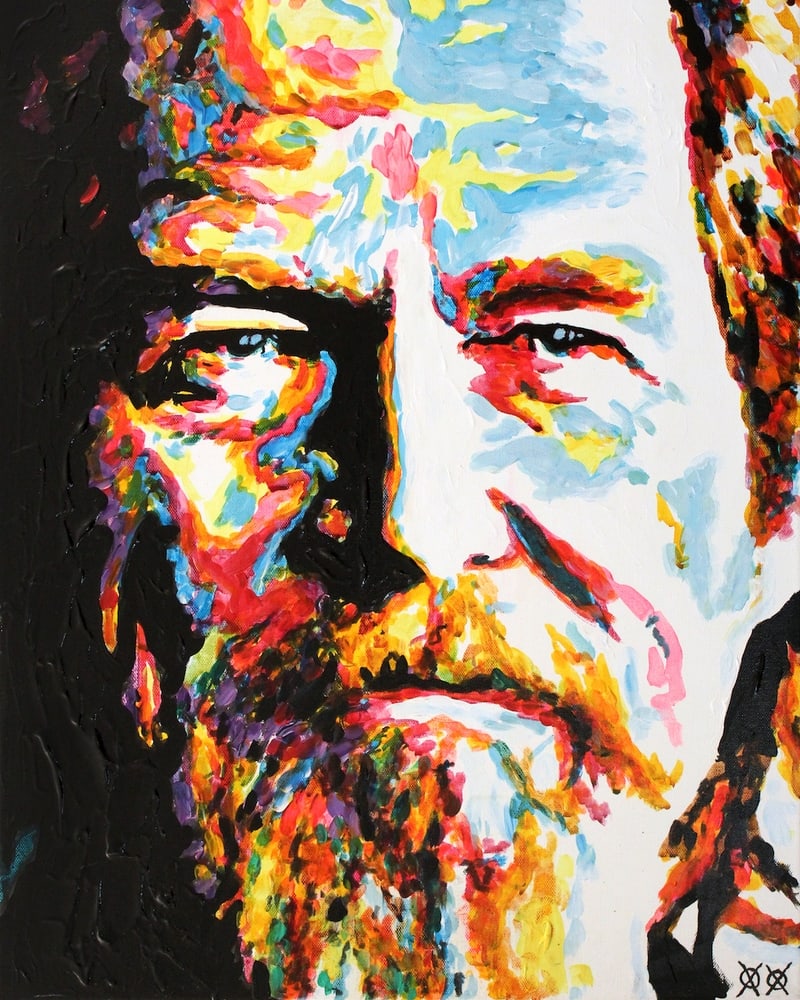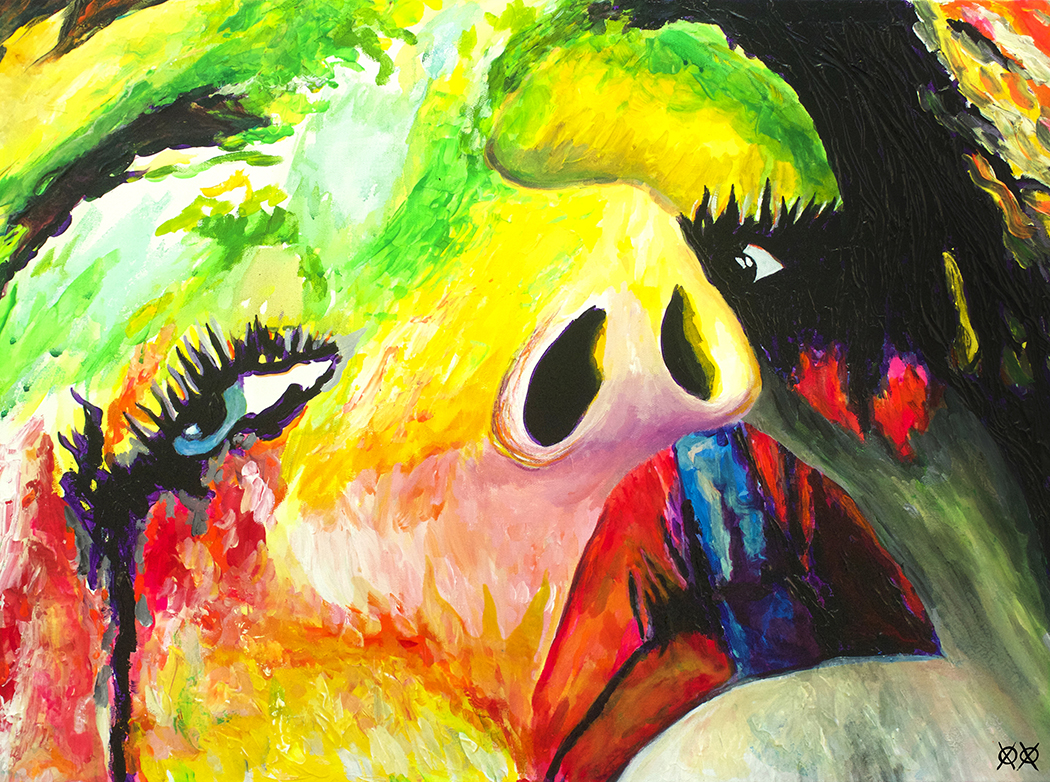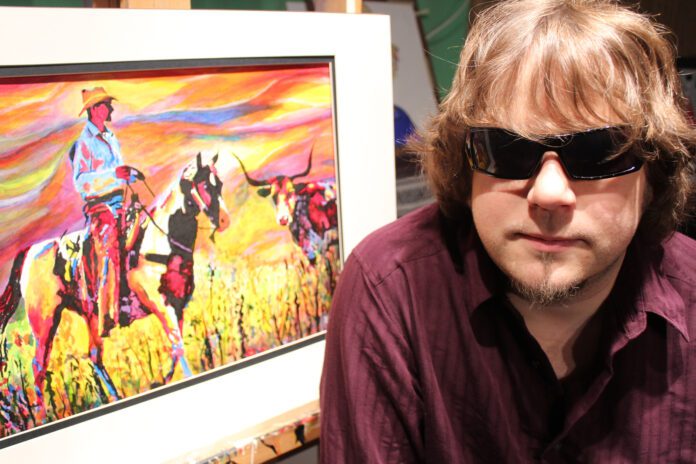Texas-native John Bramblitt proclaims, “I think I could draw before I could walk;” but he never envisioned his art hobby would become a career. In fact, he was studying creative writing at the University of North Texas. Then, epileptic seizures impacted his brain’s ability to control vision and, by his mid-twenties, John was blind.
John faced depression as he adapted to life with a new disability; but, soon, realized his hands (via touch) could achieve what his eyes (via sight) previously did. “After I learned to navigate the house and getting to campus, I thought ‘if I can navigate a city, surely I can navigate a canvas.’” He started painting to work through his depression and to reconnect with loved ones by portraying his feelings. His reach, however, far exceeded his expectations. John’s art has now been sold in over 120 countries!
When gallery show opportunities first arose, John stayed mum about his disability. He simply wanted the art to be appreciated for what it was, rather than because of who created it (and how). It didn’t take long for raving media reviews to reveal his remarkable talent and impressive creative process. “The attention actually helped me heal and grow as a person and an artist because I was [then] contacted by various charities and nonprofits that wanted me to talk to their clients or do workshops,” John explains. “Through that, I met soldiers with PTSD, children with autism, adults with Alzheimer’s, people with epilepsy and other issues ─ and I felt at home. Even though what we were dealing with wasn’t the same, we understood each other on a deep level. It was wonderful for me to be around these people who just got me and I got them. It definitely pushed my art forward.”
Making Masterpieces
So, how does a blind artist navigate a canvas? John adds braille labels to paint tubes but, more importantly, his accuracy is accomplished from creating raised lines with each paint stroke. He figured out how to identify and control paint colors by mixing different mediums to achieve specific textures. “The mediums are the stuff in the paint that holds the pigment of the color. You can make the medium feel really thick or thin, or like oil or water.” Initially, it took John about a month to complete a painting but, now with his fine-tuned method, he’ll finish a piece in just a couple of days. “I also mix drying agents into my paint. I can actually draw a line and have it dry almost instantly,” he adds.
“John never ceases to amaze me. After having witnessed him paint for many years, I understand the process but it still baffles me that he can draw out his compositions so well. I feel blessed that he has been able to overcome this adversity and, more so, that he shows our [10-year-old] son on a daily basis that anything is possible,” says John’s wife, Jacqi, who is also an artist (focused on photography and design). Her sentiments are shared by many. The now 47-year-old painter’s life has even been featured in two short films, “Line of Sight” and “Bramblitt.” Despite his success, John remains humble and passionate, “My work is just about how I feel. And if people connect with it, then that is a huge gift!”
A Colorful Future
When John began painting, he describes the work as dull and geometric with muddy colors which he believes reflected his depression. As his life illuminated with restored and newfound happiness, he gravitated toward brighter colors, recounting, “Once my son was born, it was like color exploded in my life again.”
John jokingly declares, “Every painting that I work on is my favorite because it’s the process that I love… being in that moment!” So while he, of course, enjoys displaying work in galleries, John truly enjoys helping others discover the bright and joyful process of painting. He leads various lectures and multi-sensory workshops at art facilities, schools, nonprofits and beyond. Many budding artists are especially intrigued by his ‘Blindfold Painting’ sessions where John instructs participants on techniques that mimic his own manner. He’s slated to lead this and other classes this summer as an ‘artist-in-residence’ in Tulsa and Oklahoma City, and is also set to tackle some BIG canvases: two four-story murals in the Dallas art district.
Leaving a Legacy
While painting took the forefront, John never lost his love for writing. He penned a personal memoir, Shouting in the Dark, about his journey through vision loss, depression and finding artistic vision. “Reading and hearing stories from other people who were battling disability really helped me. I wanted to contribute to the dialogue,” he shares.“Now, I try to be a great advocate for disability too.” John’s actually discovered that many artists also face either physical or mental challenges. “Art is just a message, and people with disabilities have a lot to say,” he explains; adding that he’s pleased to notice an increase of acceptance and awareness, “People used to hide their disabilities and now I think it’s a great turning point for [disabled] artists and all people with disabilities.”
While his book was one of many professional highlights, his ultimate career objective naturally involves a canvas and paint. “I have a goal, before I die, to do a perfect painting ─ a painting that describes exactly what I’m feeling… and I’m still working on that,” John says. Visit Bramblitt.net to learn more about the life and works of John Bramblitt, explore workshops and to purchase paintings.
Photos:

Above: Artist John Bramblitt with painting, Lead Bull
Below left: Jeff Bridges
Below right: Melting in the Music






